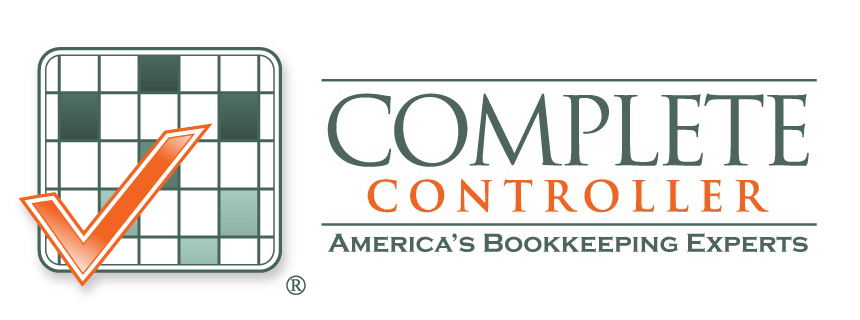Spring cleaning is a well-known ritual in homes, marking a time to refresh living spaces by thoroughly cleaning and decluttering. But when it comes to businesses—especially healthcare organizations—spring cleaning can be more than just physical space management; it can extend to optimizing financial operations and streamlining systems. Financial spring cleaning refers to the process of reviewing, reassessing, and refining all aspects of a business’s financial health, with a focus on boosting efficiency, cash flow, and overall profitability.
In the healthcare industry, where margins can often be tight, financial spring cleaning is an essential practice to ensure operational success, improve service delivery, and avoid unnecessary complications. Let’s explore how healthcare organizations can leverage these steps to optimize their financial operations and improve their bottom line.

Re-Examine Payment Policies
For healthcare providers, cash flow management is critical. A steady stream of payments ensures that you can cover operational costs, pay staff, and continue offering high-quality care. However, delayed payments or unpaid bills can pose a significant challenge. According to industry data, healthcare providers often face long payment cycles due to insurance reimbursements, patient deductibles, and billing disputes. Without a clear understanding of outstanding payments, practices risk increased accounts receivable and reduced cash flow.
Action Steps:
Analyze Accounts Receivable: Work with your finance team to track unpaid bills and generate an aging report. Categorize accounts by payment status (30 days, 60 days, 90 days, etc.). This helps identify patients, insurance companies, or payers who are consistently behind on payments.
Negotiate Payment Terms: Consider offering early payment incentives or discounts for patients paying upfront. For recurring patients or long-term treatment programs, evaluate the feasibility of payment plans that break down larger balances into manageable installments.
Review Insurance Contracts: Regularly evaluate your contracts with insurance providers. Are they paying on time? Are reimbursements in line with market rates? Adjust your payment policies accordingly to ensure prompt payments. If certain insurers are slow to pay or provide insufficient reimbursements, it may be worth renegotiating contracts or exploring alternative insurance carriers.
This step will enhance cash flow, reduce bad debt, and potentially save you from borrowing or incurring additional debt. Managing payments effectively not only benefits the financial health of the organization but also reduces the burden on administrative teams handling billing inquiries.
Assess Pricing Models
Pricing within the healthcare sector can be complex, with various factors influencing cost structures—insurance reimbursements, treatment protocols, and competitive rates. Healthcare providers must ensure that their pricing is not only competitive but also sustainable for the practice’s profitability. If your pricing model is outdated or inefficient, it could lead to revenue shortfalls or deter patients from seeking necessary treatments.
Action Steps:
Market Comparison: Analyze how your pricing compares to other healthcare providers in your region or specialty. Are you charging too much or too little for the services you offer? Keep in mind that pricing should be both competitive and reflect the quality of care provided.
Evaluate Cost-to-Serve: Ensure that your prices cover operational costs, including facility maintenance, staff wages, medical supplies, and equipment. Adjust pricing to avoid running into losses while remaining fair and accessible to patients. In some cases, it may be appropriate to raise prices for certain services, but ensure that increases are in line with industry standards and patient affordability.
Revisit Service Bundling: Consider bundling certain services, such as preventative care packages or wellness check-ups, to improve both patient satisfaction and profitability. Bundling services can also encourage patients to seek care they might otherwise defer, helping to increase overall revenue.
Pricing is a sensitive area in healthcare, and getting it right can ensure financial health while maintaining patient trust. In some cases, raising prices could alienate patients or impact patient volume, so it’s essential to strike the right balance.
Review Cash Balances and Operating Expenses
Healthcare facilities face unique financial pressures, especially during seasonal downturns or periods of low patient volumes. It’s essential to prepare for such lulls by ensuring you have sufficient working capital to cover fixed expenses such as rent, utilities, and staff salaries. During times of financial uncertainty, maintaining enough liquidity ensures that your practice can continue to operate smoothly without disruption.
Action Steps:
Evaluate Cash Flow Trends: Review past financial records to understand cash flow fluctuations throughout the year. Identify lean periods and plan for them by maintaining higher cash reserves or exploring short-term financing options. This will help smooth out cash flow disruptions during slow periods or unexpected financial challenges.
Maintain Liquidity: Always ensure you have enough liquid assets to cover fixed operating expenses, especially during periods of slower revenue generation. This can prevent the need for borrowing or relying on lines of credit at high-interest rates. If cash reserves are low, consider securing a working capital loan or opening a new line of credit to cover operational costs.
Evaluate Fixed vs. Variable Costs: Understanding your fixed expenses (such as rent, utilities, and insurance) and variable costs (such as medical supplies and temporary staffing) is critical. Look for opportunities to reduce fixed costs where possible, and carefully monitor variable costs to avoid unnecessary expenses.
Preparing for potential downturns while maintaining enough cash to cover fixed costs is a crucial aspect of financial spring cleaning in healthcare. By safeguarding your practice’s liquidity, you can avoid the stress of financial instability and continue to focus on patient care.

Re-Negotiate Contracts and Vendor Agreements
Healthcare organizations often sign long-term contracts with suppliers, service providers, or equipment leasing companies. These agreements can contribute significantly to fixed costs, which, if not regularly evaluated, may eat into profits. As your healthcare practice grows, some of these contracts may become outdated or less favorable, so it’s important to reassess them periodically.
Action Steps:
Review Supplier Contracts: Healthcare providers often rely on multiple suppliers for medications, equipment, and consumables. Reassess contracts to ensure you are getting the best deals or terms. Explore renegotiating long-term contracts for better rates or discounts, particularly for high-volume or frequently ordered items. In some cases, consolidating suppliers or switching to alternative vendors could lead to substantial savings.
Lease vs. Buy Decisions: Reconsider any long-term leasing agreements for expensive medical equipment. Purchasing equipment outright or exploring alternative financing options could save substantial amounts in the long term. Evaluate the total cost of leasing versus the upfront cost of purchasing and determine which option offers the best value over time.
Service Contracts: Review service agreements, such as for IT support or cleaning services. Determine if the services provided are meeting your needs and if better or more affordable options are available. Service providers may be willing to offer discounts for long-term commitments or prompt payment.
Renegotiating existing contracts or exploring alternatives can free up capital, which can be reinvested into patient care or other strategic areas of the practice. This is especially important in the healthcare industry, where operational costs are often high, and small savings can add up over time.
Analyze Recurring Subscriptions and Software Costs
Like many businesses, healthcare organizations often subscribe to a variety of software platforms, tools, and services, from Electronic Health Record (EHR) systems to patient management tools and billing platforms. However, these subscriptions can accumulate over time, often for services that are no longer utilized or necessary.
Action Steps:
Audit Subscriptions: Conduct a thorough audit of all recurring software subscriptions, including EHRs, patient scheduling software, billing systems, and other digital tools. Ensure each platform is still serving your needs and providing value. If a subscription is no longer beneficial or necessary, consider canceling it.
Cancel Unnecessary Subscriptions: Identify unused or underutilized software and cancel subscriptions to reduce overhead. Explore more cost-effective solutions or consolidate services if possible. In some cases, it may be more efficient to invest in an all-in-one platform that combines multiple functions, reducing the need for multiple subscriptions.
Optimize Technology Investments: Invest in systems that are scalable and can support your growing practice while providing the best value for your money. Technology investments should streamline operations and enhance patient care, not contribute to unnecessary expenses.
By optimizing your software and technology spending, you can redirect savings toward improving the quality of care or expanding your services. Properly managing software and tech-related costs is vital in an increasingly digital healthcare environment.
Evaluate Staffing and Labor Costs
Labor costs are one of the largest expenditures for healthcare organizations. Properly managing staffing levels, wages, and benefits can lead to significant savings, without compromising the quality of patient care. Given the ongoing shortage of healthcare workers in many regions, it’s essential to balance staffing needs with financial sustainability.
Action Steps:
Review Staffing Levels: Evaluate whether you have the appropriate number of staff for your patient volume. Consider implementing staffing efficiency models, such as flexible scheduling or cross-training, to reduce costs without affecting service delivery. If certain roles can be automated or outsourced, explore those options to cut costs.
Optimize Overtime and Benefits: Examine overtime pay, employee benefits, and incentive structures. Look for areas where cost-saving measures could be implemented, such as improving scheduling practices to avoid excessive overtime or offering flexible benefits packages. Additionally, consider offering employee wellness programs to boost morale and reduce turnover.
Balancing efficient staffing with high-quality care ensures financial sustainability while maintaining patient satisfaction. Well-managed labor costs contribute to overall profitability without compromising service quality.

Final Thought
Much like the personal ritual of spring cleaning, a financial spring cleaning for healthcare organizations can lead to better operational efficiency, improved cash flow, and a more organized, profitable practice. By regularly reviewing payment policies, pricing models, cash balances, contracts, subscriptions, and staffing levels, healthcare providers can ensure they’re positioned for long-term success.
Remember, it doesn’t have to be spring to start. Periodic reviews and adjustments are necessary to keep your healthcare organization on the path to prosperity while providing exceptional care to your patients. Financial spring cleaning is not just a seasonal task—it’s an ongoing commitment to improving the health and sustainability of your practice.
 About Complete Controller® – America’s Bookkeeping Experts Complete Controller is the Nation’s Leader in virtual bookkeeping, providing service to businesses and households alike. Utilizing Complete Controller’s technology, clients gain access to a cloud platform where their QuickBooks™️ file, critical financial documents, and back-office tools are hosted in an efficient SSO environment. Complete Controller’s team of certified US-based accounting professionals provide bookkeeping, record storage, performance reporting, and controller services including training, cash-flow management, budgeting and forecasting, process and controls advisement, and bill-pay. With flat-rate service plans, Complete Controller is the most cost-effective expert accounting solution for business, family-office, trusts, and households of any size or complexity.
About Complete Controller® – America’s Bookkeeping Experts Complete Controller is the Nation’s Leader in virtual bookkeeping, providing service to businesses and households alike. Utilizing Complete Controller’s technology, clients gain access to a cloud platform where their QuickBooks™️ file, critical financial documents, and back-office tools are hosted in an efficient SSO environment. Complete Controller’s team of certified US-based accounting professionals provide bookkeeping, record storage, performance reporting, and controller services including training, cash-flow management, budgeting and forecasting, process and controls advisement, and bill-pay. With flat-rate service plans, Complete Controller is the most cost-effective expert accounting solution for business, family-office, trusts, and households of any size or complexity.




